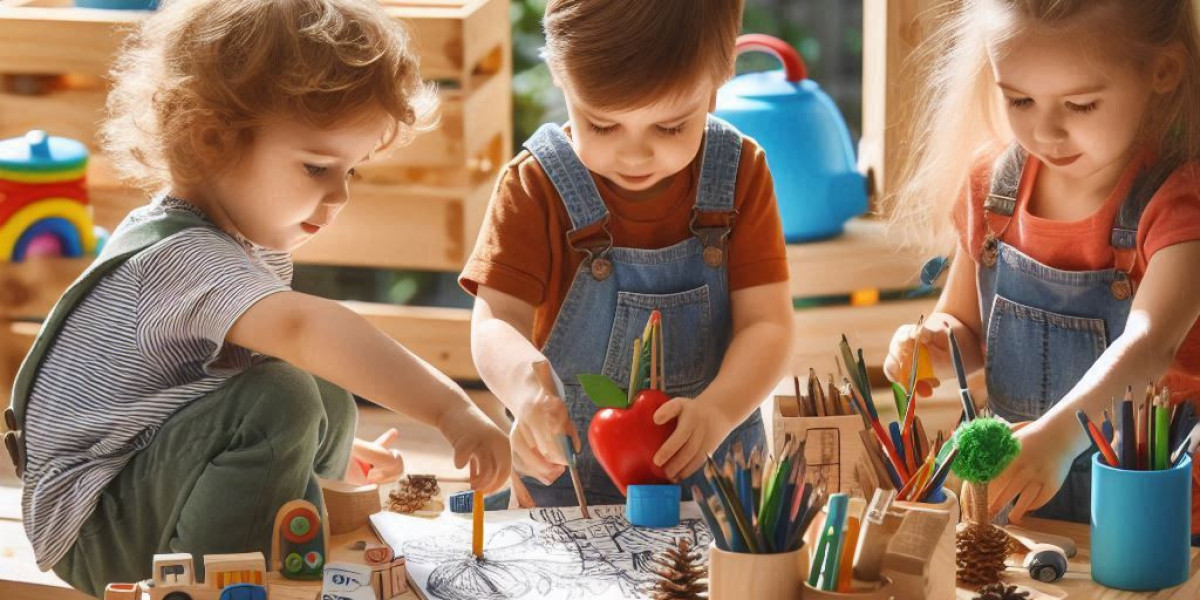Creating engaging environments for young children is essential for their growth and development. A growing focus on early childhood learning highlights the importance of natural play spaces in nurturing creativity and cognitive skills. These environments encourage exploration, imagination, and a connection to the natural world.
The Role of Natural Play Spaces
Natural play spaces refer to outdoor environments designed with natural elements like trees, plants, rocks, and water features. Unlike traditional playgrounds filled with structured equipment, natural play spaces are unstructured and allow children to explore freely.
Children thrive in these settings because they stimulate sensory experiences. The feel of soil, the sound of rustling leaves, and the sight of flowing water provide endless opportunities for discovery. These spaces act as open-ended play areas, fostering creativity and problem-solving skills.
Creativity Through Exploration
Children are natural explorers. In natural play spaces, they are not confined by rigid structures. They can turn a stick into a sword or a pile of leaves into a cozy nest. These imaginative scenarios are vital in helping children think outside the box.
For instance, climbing trees or balancing on logs helps develop physical coordination while encouraging innovative thinking. Activities like building small shelters with twigs and leaves enhance problem-solving abilities and teamwork among peers.
Cognitive and Social Benefits
Playing in natural environments also contributes to cognitive development. These spaces often have diverse textures, sounds, and sights that challenge a child's sensory processing skills. By interacting with these elements, children improve their memory, focus, and spatial awareness.
Additionally, these environments encourage group play, which enhances social skills. Sharing, negotiating, and collaborating are natural outcomes when children build a sandcastle together or explore a woodland path as a group.
How Natural Play Spaces Differ from Traditional Playgrounds
While traditional playgrounds are beneficial for structured physical activity, they lack the flexibility of natural environments. Traditional playgrounds often come with a fixed set of activities, such as swings and slides, which limit creative possibilities.
Natural play spaces, on the other hand, are dynamic. Seasonal changes alter their appearance, providing new challenges and adventures. For example, autumn leaves offer a chance to learn about nature’s cycles, while a snowy landscape can inspire building snow structures.
Encouraging Independence
Natural play spaces empower children to make decisions independently. With no fixed rules or instructions, children are free to choose how they want to interact with their surroundings. This autonomy fosters self-confidence and resilience.
When children decide to climb a tree or cross a shallow stream, they learn to assess risks and trust their judgment. These experiences are critical for developing a strong sense of independence and responsibility.
Building a Connection with Nature
Spending time in natural play spaces fosters a lifelong connection with nature. Children who play outdoors are more likely to develop environmental awareness and care for the planet.
This connection benefits their well-being. Research shows that exposure to nature reduces stress and improves mood in children. It provides them with a calm and peaceful setting to recharge their energy.
Designing Effective Natural Play Spaces
To maximise the benefits of natural play spaces, it is important to design them thoughtfully. These spaces should include a mix of natural elements that encourage creativity and exploration.
· Plants and Trees: Include various species to enhance sensory experiences.
· Water Features: Streams or shallow ponds allow children to explore and learn about aquatic life.
· Natural Materials: Rocks, logs, and sand offer countless possibilities for imaginative play.
· Open Areas: Provide ample space for running, jumping, and group activities.
Safety is also crucial. While natural play spaces promote exploration, they should be carefully maintained to minimise risks, such as sharp edges or unstable structures.
The Role of Educators and Parents
Both educators and parents play a significant role in guiding children during outdoor play. They can encourage children to ask questions about their surroundings, sparking curiosity and a deeper understanding of nature.
Educators can incorporate natural play spaces into early childhood learning programs to complement indoor activities. Parents, meanwhile, can create mini-natural play areas at home with simple elements like a garden patch or a sandbox.
Why Meadow Lane Supports Natural Play Spaces
At Meadow Lane, we understand the value of natural play in shaping young minds. Our approach to early childhood learning services integrates outdoor experiences to nurture creativity, confidence, and a love for nature. By encouraging children to explore and imagine, we help them build essential skills for their future.
Conclusion
Natural play spaces are more than just areas for recreation. They are vital for fostering creativity, independence, and a connection with nature in young children. As parents and educators, providing opportunities for children to explore natural environments can significantly impact their overall development.
By integrating natural play spaces into early childhood learning services, Meadow Lane ensures every child has the foundation they need to thrive creatively and cognitively.










